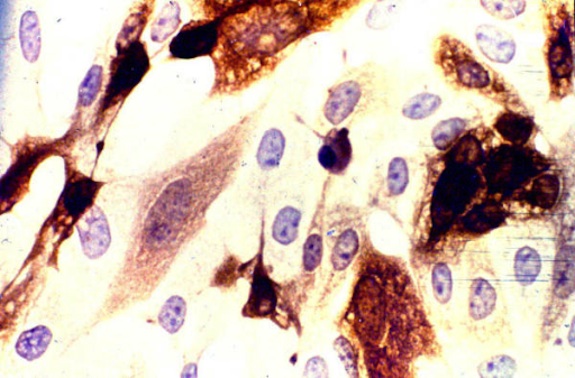Now We Know Just How Herpes Infects Human Cells
Figuring out a way to stop the viral explosion could take out not only herpes, but a whole host of other ailments
Some studies estimate that between 65 to 90 percent of the world’s adult human population is infected with the herpes virus (HSV-1 or HSV-2). Now, researchers have new evidence showing how HSV-1—the type of herpes that causes lesions around the mouth—goes about establishing itself in the body. Like an exploding balloon or spewing bottle of champagne, Popular Science reports, herpes uses extremely high pressure to eject its genetic load into an unsuspecting cell’s nucleus.
contains a double strand of DNA 400 times longer than the radius of its capsid, the protein shell that holds it. As a result, the DNA bends on itself to fit inside, creating a huge amount of pressure on the viral shell–tens of atmospheres, around eight times the internal pressure of a car tire.
The virus creeps into the cell undetected and then, when it finds a gap in the membrane of cell’s nucleus, explodes its own protein structures into the cell’s processing center. Game over: Herpes’ genome hijacks the cell. Scientists have suspected for years that this is how herpes works, but researchers from Carnegie Mellon provided new experimental evidence to prove the theory, by measuring the pressure inside HSV-1.
Some other viruses, including those that cause chicken pox and shingles, also use this method, PopSci reports. Figuring out a way to stop the viral explosion, therefore, could take out not only herpes, but a whole host of other ailments.
More from Smithsonian.com:
Zoo Polar Bear Thanks Zebra for Deadly Herpes Virus
The Evolution of the Flu Virus
/https://tf-cmsv2-smithsonianmag-media.s3.amazonaws.com/accounts/headshot/Rachel-Nuwer-240.jpg)

/https://tf-cmsv2-smithsonianmag-media.s3.amazonaws.com/accounts/headshot/Rachel-Nuwer-240.jpg)